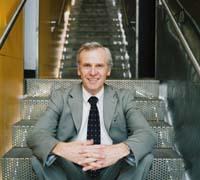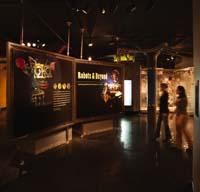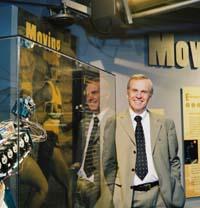John Durant: "The scientist who does not work communication is an unsuccessful scientist"

My wife is an American, a professor at Harvard University, and for a season we have been transatlantic. I was fortunate to have been able to come to MIT in 2005, which has somewhat reduced our family's oil footprint!
The mission of the MIT Museum is to make research and innovation understandable for all. MIT is a unique organization, with a tradition of differential global research in all areas of science, engineering and technology. It is a great privilege that all these activities are responsible for their social integration; by expanding the Museum and expanding the profile of the public we want to influence more effectively.
The MIT Museum has led this year an important outreach action: First edition of the Cambridge Science Festival. On the other hand, in September has opened the extension of the plant that has inaugurated our exhibition by 50% and that makes us much more visible and visible from the street. I think these important developments start linking with the strategic plan in a very significant way.
We do three important things: We collect material from MIT's most significant research and innovations, create permanent and temporary exhibitions, and develop various types of museum-related programs, as well as other social outreach programs.
I have worked in much larger science museums, but nowhere have I found as many options as the MIT Museum to collect world-class scientific and technological tools. In a short time as director, we have achieved: original models and guides of the engineering of the lunar program Apollo of the 60s; the sonar for the first lateral exploration in the world in depth, which both opened scientific exploration; the wonderful collection of mechanical and electromechanical toys that Claude Shannon created in recent years; and the XX. Pioneering scientific and technological information from the mid-20th century, to name a few. I wonder: Where else in the world can you find precious stones like these?

Elaboration. Seeing what is done in some labs is somewhat like seeing dry paint, but sometimes scientists do very interesting things and almost always have something interesting to say about what they are doing. That is, “Open Labs” should be organized together with the scientists who are present and, if possible, viewers and scientists should be able to discuss what is happening. That's what we've tried to do at the MIT Museum with the Lab-Link initiative, a live video conferencing event that will connect the audience and researchers in the lab.
The scientist who does not work communication is an unsuccessful scientist. Communication is a fundamental part of science, which involves trying to communicate to others its contribution to human knowledge. This is the process of scientific publication that has become a true rite. Scientists who before or after do not succeed in managing to make known the discoveries that are worth will be out of their work. So if you want to be a scientist, be a good communicator!
I have always believed in the importance of science and technology museums as a meeting point between experts and society. We need to develop our museums as a forum for public engagement, learning, but also dialogue and debate. That's what we're doing here at the MIT Museum. We want to be an Institute of Contemporary Art for the world of Art.
There are many questions at once. My advice is that you are remarkable, that you are rigorous, that you are clear, that you are not a customer of your audience and that you do not take yourself so seriously.
The days have ended to say "believe me, I am a scientist." Now, scientists have to think they're going to be confronted by firing their opinion and, as other professionals have done, learn how to act on it. Confronting scientists does not necessarily mean being contrary to science, but contrary to authority.

In fact, scientists are the ones who should least care about the decline in respect for all professional groups in society, since science is contrary to authority. Given a hypothesis, scientists should pay attention to the reasons and tests and not to the names, titles and qualifications of those who have proposed the hypothesis.
Scientific journalism is a fundamental source of information, idea and opinion. In my opinion, the best scientific journalism is like the best general journalism: it reveals the unknown, clarifies the dark and faces the debatable. In short, there is no scientific and political journalism; there is only good journalism and bad journalism.
Shortly after arriving at MIT I heard the following sentence: "The fame of MIT increases as it moves away from Charles" (name of the river of the place). I thought something like that would probably have happened. In fact, in the 1990s I was a professor at Imperial College London and is known as the "MIT of Europe". Who said that imitation is the most honest way to blur?
I feel nervous, attentive, undecided and sometimes quite worried, like any other!
Buletina
Bidali zure helbide elektronikoa eta jaso asteroko buletina zure sarrera-ontzian











